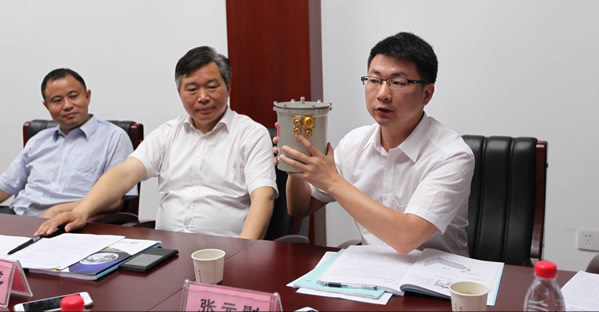
www.cqrb.cn June 12 (reporter Li Xingting): On June 12, the reporter learned from Chongqing University that China would launch Change-4 Probe in 2018 with a mission to land on the far side of the moon which no man had set foot on. As one of the “passengers” of Change-4 Probe, the science disseminating load “lunar surface mini biosphere” designed under the lead of Chongqing University will be sent to the lunar surface for the first time. By that time, it will become the first biological experiment undertaken by human beings on the lunar surface, and the entire process will be live broadcasted to the world. Hopefully, an experiment involving blossoming of a flower on the moon will be carried out for the first time in human history.
It is reported that a campaign that aimed to collect creative moon probe load designs was launched jointly by the State Administration of Science, Technology and Industry for National Defense, the Ministry of Education, the Chinese Academy of Sciences, the Central Committee of Communist Youth League and China Association for Science and Technology, in an effort to encourage college and middle school students and science and technology enthusiasts to explore the moon and inspire the public to get involved in the scientific and technological activities.
In particular, the lunar surface mini biosphere designed under the lead of Chongqing University stood out among 257 competitive creative designs, and was selected as a load of Change-4 Probe at the “commander in chief and designer in chief” meeting for moon probe project of China.
It looks like a drum made up of aluminum alloy, 18cm high, with diameter of 16cm. On December 12, the reporter had a look at the “lunar surface mini biosphere” at the Center of Space Exploration, Ministry of Education of Chongqing University.
This seemly small “lunar surface mini biosphere” contains a number of objects including seeds of potato, soil, silkworm cocoon, water source, air and cameras. It weighs 3 kg in total inclusive of the external insulating layer.
The optical fiber which forms the cap of the drum is able to utilize the sunshine shed onto the moon to promote photosynthesis of plants and generate carbohydrate and oxygen. Insect eggs like silkworm cocoons will generate carbon oxide and excrement needed by plants… Within the 100 days before the “lunar surface mini biosphere” arrives on the moon, it will maintain an independent mini ecological cycle.
“There are many resources that men can use on the moon like minerals. The problem is the day and night temperature difference is significant, with the maximum temperature above 100 ℃ and the minimum below -100℃. What’s worse, there is no atmosphere on the moon and all objects is subject to microgravity.” Liu Hanlong, vice president of Chongqing University, said that the deep space exploration carried out on the moon and research of the way to survive on the moon have always been a research object of human beings.
The arabidopsis seeds with a short growth period and seeds of potatoes, which can be used as space food, have been selected. Power supply like batteries and appropriate temperature control are both provided…Organized by the Center of Space Exploration, the Ministry of Education, the research team of Chongqing University has simulated the environmental conditions on the moon including temperature, humidity and high sealing, and created this “lunar surface mini biosphere” in collaboration with Beijing University of Aeronautics and Astronautics, Hunan University and Chongqing Normal University.
“This will be the first time in human history a mini biosphere experiment is conducted on lunar surface. Our goal is to have the first flower blossoming on the moon.” Xie Gengxin, president of Research Institute of National Defense Science and Technology of Chongqing University, said confidently that Chongqing University had formed a R&D team with members specialized in various disciplines including machinery, environment, control, biology, material, energy, optics and communication. All of the members were selected within and without Chongqing University. Currently the development is in smooth progress.
It is reported that the “lunar surface mini biosphere” will be brought onto the moon by Change-4 Probe. “By that time, the biological experiment will be conducted on the lunar surface for the first time in human history. The process will be transmitted back to the earth via signals. The biological principles and phenomena including biological growth and photosynthesis on the lunar surface of plants and animals will be live broadcasted to the world then. This may serve as a basis for people to build ecological basis on the moon in the future.” Xie added that this would inspire the sense of national pride and patriotic enthusiasm of Chinese, stimulate their enthusiasm about space exploration, and raise their environmental awareness, and would be significant for
China
’s space exploration to have greater influence and for Chongqing to have greater global prominence.
